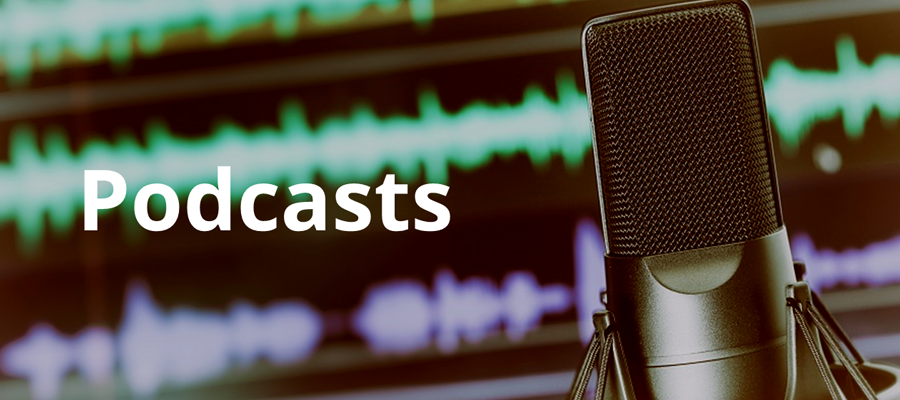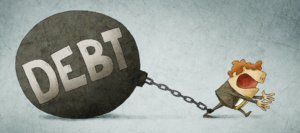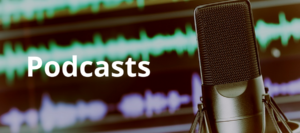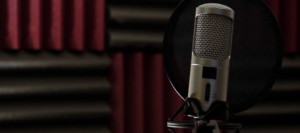If you have ever listened to a podcast and thought to yourself, “I could do that,” you’re not alone. The popularity of podcasts has exploded in recent years, and with advancements in technology, recording and producing your own podcast has become more accessible than ever before.
Whether you have a passion for storytelling, want to share your expertise on a particular topic, or simply want to entertain and engage with an audience, starting a podcast can be a rewarding experience. However, if you’re new to the world of podcasting, the process of recording and editing audio can seem daunting. In this article, you will learn the essential steps on how to record a podcast, from choosing the right equipment to polishing your audio for a professional sound.
So, grab your microphone and get ready to embark on your podcasting journey.
Contents
- Essential equipment for recording podcasts
- Free options for recording podcasts
- How to record a podcast on your computer
- Tips for high-quality podcast audio
- FAQ
- What equipment do I need to record a podcast?
- What software or platform should I use to record and edit my podcast?
- How can I improve the audio quality of my podcast recordings?
- What are some tips for conducting engaging interviews during a podcast recording?
- How do I ensure proper organization and file management for my podcast recordings?
Essential equipment for recording podcasts
To record a podcast, there are several essential pieces of equipment that you will need. The most important is a microphone, as this will capture your voice and any other sounds you want to include in your podcast. You can choose from a variety of microphones, including USB, dynamic, or condenser microphones.
USB microphones are the most convenient and affordable option, as they can easily connect to your computer and require no additional equipment. Dynamic microphones are better for recording in noisy environments, while condenser microphones offer a higher quality sound.
Depending on your budget and recording environment, you can choose the microphone that best suits your needs.
In addition to a microphone, you will also need a recording software to capture and edit your audio. There are many options available, both paid and free, such as Audacity, GarageBand, or Adobe Audition. These programs allow you to record, edit, and mix your audio to create a professional-sounding podcast.
If you are just starting and want to record a podcast for free, Audacity is a great option as it is open-source and offers a wide range of features. Once you have your microphone and recording software set up, you can start recording your podcast on your computer.
Remember to select a quiet and well-ventilated space to reduce background noise and get the best audio quality for your podcast. With the right equipment and software, you can easily record a high-quality podcast from the comfort of your own home.
Free options for recording podcasts
When it comes to recording a podcast, there are a variety of free options available to you. What is needed to record a podcast? First and foremost, you will need a microphone to capture your voice and any other sounds you want to include in your podcast.
There are several types of microphones to choose from, including USB, dynamic, and condenser microphones, each with their own unique features and benefits. USB microphones are a popular choice for podcasters as they are affordable and easy to use, while dynamic and condenser microphones offer better sound quality but may require additional equipment.
Can I record a podcast for free? The answer is yes! There are many free recording software options available that you can use to record and edit your podcast. Some popular choices include Audacity, GarageBand, and Adobe Audition. These programs offer a wide range of features and tools to help you create a professional-sounding podcast. As a bonus, they are user-friendly and compatible with both Mac and PC computers.
Now that you have your microphone and recording software, you may be wondering, how do I record a podcast on my computer? The process may vary slightly depending on the software you choose, but the general steps include selecting your microphone as the input source, adjusting your recording levels, and hitting the record button. It’s always a good idea to do a test recording to ensure your audio levels are balanced and your microphone is working properly.
One important factor to consider when recording a podcast is audio quality. How do I record audio quality for podcasts? To ensure the best sound quality, it’s essential to find a quiet and acoustically-treated space to record in. This could be a closet, a quiet room, or even a homemade sound booth. It’s also important to speak clearly and at a consistent volume, and to minimize any background noise or distractions.
In conclusion, recording a podcast for free is possible with the right equipment and software. By following these steps and considering the quality of your recording environment and techniques, you can create a high-quality podcast that will captivate your listeners. Now that you have the knowledge and tools to get started, go forth and share your voice with the world through the exciting medium of podcasting.
How to record a podcast on your computer
To record a podcast on your computer, there are a few essential items you will need. First and foremost, a good quality microphone is crucial to capturing clear and crisp audio. There are various types of microphones to choose from, such as USB, dynamic, and condenser microphones, each with their own unique features and advantages. Depending on your budget and recording needs, you can find a suitable microphone to fit your podcasting style.
Nowadays, with the advancement of technology, it is possible to record a podcast for free on your computer. There are several free recording software options available, such as Audacity, GarageBand, and Adobe Audition. These programs offer a range of features and tools to help you create a professional-sounding podcast. With these tools at your disposal, you can easily edit and enhance your audio quality to make your podcast sound polished and engaging for your listeners. So, you don’t have to break the bank to record a high-quality podcast, thanks to these free recording options.
Tips for high-quality podcast audio
When it comes to high-quality podcast audio, there are a few key tips to keep in mind. First and foremost, having the right equipment is crucial. As mentioned earlier, a good quality microphone and recording software are essential for recording a podcast on your computer. Additionally, make sure to choose a quiet and controlled environment for recording to minimize background noise and distractions.
Another important factor in achieving high-quality podcast audio is proper microphone technique. This includes speaking at a consistent distance from the microphone, avoiding plosives (popping sounds), and adjusting the microphone settings to suit your voice. It may take some practice to find the right balance, but taking the time to perfect your microphone technique can greatly improve the overall audio quality of your podcast.
In addition, make sure to record in a lossless audio format such as WAV or AIFF to preserve the highest possible quality. This will also give you more flexibility in editing and post-production. And speaking of editing, taking the time to edit and enhance your audio can make a significant difference in the final product. This can include removing any background noise, adjusting levels and EQ, and adding in music or sound effects as needed.
Overall, with the right equipment, techniques, and attention to detail, you can achieve high-quality audio for your podcast without breaking the bank. Remember to experiment and find what works best for you and your podcast, and don’t be afraid to seek out resources or tutorials to improve your skills and take your podcast audio to the next level.
Now that you have all the steps and tips on how to record a podcast, it’s time to put them into practice. Remember to always be prepared, stay organized, and have fun with it. Your audience will appreciate the effort you put into creating quality content.
And don’t be afraid to make mistakes, they can often lead to some of the best moments in a podcast. Keep practicing and refining your skills, and soon enough you’ll become a pro at recording engaging and professional podcasts. Happy podcasting!
FAQ
What equipment do I need to record a podcast?
To record a podcast, you will need a few essential pieces of equipment. Firstly, you’ll need a good quality microphone, such as a USB or XLR microphone, to capture clear audio. Additionally, a pair of headphones is crucial for monitoring the sound during recording.
A pop filter can help reduce unwanted noises, like plosive sounds. To ensure optimal sound quality, a microphone stand or boom arm can keep the microphone steady. Lastly, a computer or laptop equipped with recording software, such as Audacity or GarageBand, will allow you to edit and save your podcast episodes.
What software or platform should I use to record and edit my podcast?
For recording and editing your podcast, you should consider using software such as Audacity or Adobe Audition. Both options offer a range of features that allow you to easily record, edit, and enhance your audio. Audacity is a free and open-source program that is user-friendly and offers basic editing tools. On the other hand, Adobe Audition is a more professional-grade software that offers advanced editing capabilities and a variety of audio effects. Ultimately, the choice depends on your specific needs and level of expertise. Take some time to explore both options and see which one suits you best.
How can I improve the audio quality of my podcast recordings?
To improve the audio quality of your podcast recordings, there are several steps you can take. First, invest in a high-quality microphone that suits your needs. Second, find a quiet location to minimize background noise. Third, use a pop filter to reduce plosive sounds.
Fourth, adjust your microphone settings and position it correctly for optimal sound capture. Fifth, consider using headphones to monitor and adjust audio levels in real-time. Sixth, use audio editing software to remove any unwanted noise or improve the overall sound quality. Lastly, practice good speaking techniques, such as speaking clearly and consistently, to ensure a professional-sounding podcast.
What are some tips for conducting engaging interviews during a podcast recording?
To conduct engaging interviews during your podcast recording, remember to engage your listeners by asking thought-provoking questions and providing interesting insights. Make the interviewee feel comfortable by establishing a friendly and relaxed atmosphere. Maintain a conversational tone and actively listen to their responses, showing genuine interest.
Use open-ended questions to encourage detailed answers and allow the interviewee to share their expertise. Research your guest beforehand to ask relevant and personalized questions. Lastly, be mindful of time and keep the conversation flowing by transitioning smoothly between topics. By following these tips, you’ll ensure your podcast interviews are engaging and captivating for your audience.
How do I ensure proper organization and file management for my podcast recordings?
To ensure proper organization and file management for your podcast recordings, you should create a dedicated folder on your computer specifically for your podcast files. Within this folder, create separate subfolders for each episode or topic. Label each file with a clear and consistent naming convention, including the episode number or topic.
Use tags or metadata to further categorize and organize your files. Additionally, consider using cloud storage or external hard drives to back up your recordings. Regularly review and declutter your folders to maintain an organized system. By following these steps, you can easily locate and manage your podcast recordings efficiently.





